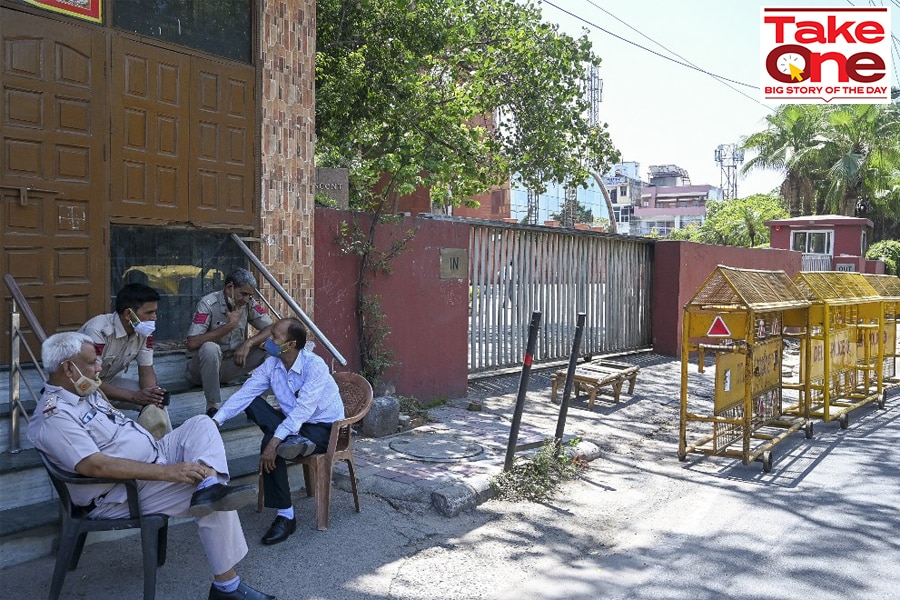
After pursuing terrorists, Delhi Police Special Cell investigates Twitter's 'manipulated media' policy
In the middle of a lockdown, Delhi Police's Special Cell turns up at the offices of social media platform Twitter in Delhi NCR to get "satisfactory" answers on its tweet labelling policy
 Delhi police personnel sit outside a gate of the Twitter India's office at Crescent building in New Delhi on May 25, 2021, as police served a notice at Twitter's offices over flagged governments tweets as 'manipulated media' a day before. Photo by Prakash SINGH / AFP
Delhi police personnel sit outside a gate of the Twitter India's office at Crescent building in New Delhi on May 25, 2021, as police served a notice at Twitter's offices over flagged governments tweets as 'manipulated media' a day before. Photo by Prakash SINGH / AFP
Two days ago, the Delhi Police’s Special Cell was boasting about having arrested national wrestler Sushil Kumar on murder charges. Three months ago, the same department submitted its third supplementary chargesheet of the February 2020 Delhi riots in a New Delhi court. Six months ago, the cell had arrested five suspected terrorists after an encounter.
But on Monday night, the elite cell, whose official Twitter handle defines its job as to “prevent, detect and investigate cases of terrorism, organized crime and other serious crimes in Delhi”, descended on three Twitter offices in Delhi-NCR to investigate how Twitter labels manipulated media. The team was met with empty offices.
The Delhi Police’s Public Relations Officer Chinmoy Biswal told Forbes India that the police was there to serve a notice. Twitter has globally and publicly instituted a work from home policy amid the Covid-19 outbreak. When Forbes India asked Biswal how serving this notice at 8 pm in the middle of a pandemic-induced lockdown would help, he answered with a question—“Is there a lockdown for Delhi Police as well?”
Earlier on Monday, in response to a complaint filed by two Congress leaders on May 18, the Delhi Police had written to Twitter to seek information about its decision to label tweets by members of the Bharatiya Janata Party about an alleged toolkit created by the All India Congress Committee’s Research Department, as ‘Manipulated Media’. While fact checking platform Alt News debunked the toolkit claim, Twitter explains in a blog that the ‘manipulated media’ label is applied to media that is deceptively altered in any way or which deceives people about the origin of content.








